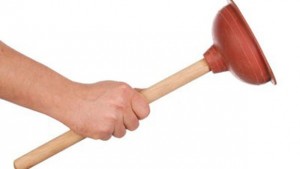Restoring Water Flow to a Clogged Kitchen Drain
 No matter how hard you try to keep everything in order at your home, plumbing and heating problems eventually occur. Since nobody has enough money to call out a plumber on a monthly basis, it would be useful to know how to prevent a clogged sink and what can we do ourselves to restore water flow to the kitchen drain. We are here to help you with several useful tips!
No matter how hard you try to keep everything in order at your home, plumbing and heating problems eventually occur. Since nobody has enough money to call out a plumber on a monthly basis, it would be useful to know how to prevent a clogged sink and what can we do ourselves to restore water flow to the kitchen drain. We are here to help you with several useful tips!
Regular flushes of hot (but not boiling) water can prevent clogged kitchen sink drains to some extent. However, your success in using this method will certainly depend on how long is the kitchen drain pipe to the 3-4 inch pipe it joins and whether the pipe is iron or plastic. The longer the pipe is, the longer the hot water flushes should be, since it will take some time for hot water to warm it up. In general, the idea is to carry the fat away by liquefying it first. When it comes to material it is made from, iron pipes take longer for hot water to warm them, plus fat, food particles and soap adhere to the walls more than to the walls of plastic pipes.
If you realize that water does not run through the drain at all, it’s too late for DIY plumbing, you have to call an expert to deal with it. However, if you notice the slower flow, you can be sure that there is a bunch of trash and junk clogged up in some of the pipes (it might not even be in your kitchen, but in some other drain pipes). So, you have to fight accumulated soap, fat and food particles, as well as hair clogs. Soap becomes a wet mass that adheres to the walls of horizontal pipes, food particles lay along the bottom of drain pipes, while fat condenses onto the cool walls of the pipe, narrowing the passage.
Be careful with liquid drain cleaners, since they commonly contain caustic, hazardous chemicals and can severely damage older types of pipes. Also, these substances are toxic to fish, although there are some earth-friendly options. But, you can always try a plunger, but make sure you keep at it (be patient!). If that doesn’t work, try to snake it (if you have a proper equipment). If, however, none of these things solves your problem, calling out the plumber is the only thing to do.
